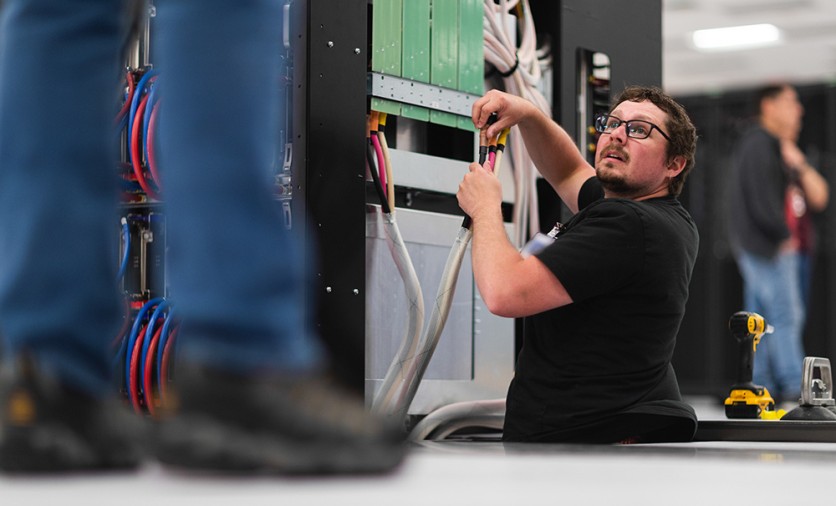LANL is rapidly advancing in the setup of its state-of-the-art supercomputer, Crossroads. This powerful system started installation in June this year. LANL's role is essential in assessing the reliability of the US nuclear stockpile, all without the need for extensive physical testing.

Introducing 'Crossroads'
The Los Alamos National Laboratory (LANL) is making significant progress in deploying its cutting-edge supercomputer, Crossroads, aimed at evaluating the integrity of the US nuclear stockpile without resorting to extensive physical tests.
Interesting Engineering reported that this revolutionary system, provided by Hewlett Packard, began its installation process in June of this year. The Department of Energy (DoE) holds the crucial responsibility of ensuring the dependability of the US nuclear arsenal.
To achieve this mission, the federal agency relies on simulations rather than conducting actual tests of warheads. These simulations are used to gauge the storage, maintenance, and overall effectiveness of these critical weapons.
Crossroads represents the third installment in the Advanced Technology Systems (ATS) series, each committed to conducting vital simulations. Trinity (ATS-1), the pioneer system, resides at LANL, while Sierra (ATS-2), the subsequent addition, serves at Lawrence Livermore National Laboratory (LLNL).
Also read : Nvidia, Microsoft to Build an AI Supercomputer-Aims to Deliver the 'First Public Cloud' with its Tech
The Register reported that Irene Qualters, associate Laboratory director for Simulation and Computation stated that Crossroads is emblematic of the future.
"With the introduction of a key co-design element, high-bandwidth memory, Crossroads will deliver four to eight times better performance than Trinity on our most challenging stockpile simulation codes. And we expect additional performance and fidelity gains on future systems," she stated.
Charlie Nakhleh, Associate Lab Director for Weapons Physics at Los Alamos stated that this marks a substantial leap forward in our nation's capacity to evaluate stockpile safety, all while adapting the deterrent capabilities to align with evolving national security demands
Specialized Subsystems
Crossroads is not merely a single colossal computer, as stated in its press release. It's a system consisting of three smaller, specialized subsystems: Rocinante, Razorback, and Tycho. Each of these components has a distinct role in the nuclear stockpile simulation process.
While the details of these simulations remain highly classified, the code used to execute them isn't exclusively developed within classified environments. Code developers require access to a scaled-down version of the Crossroads architecture for application regression testing, a function fulfilled by Rocinante.
Razorback functions as a testing environment for system administrators, providing them with the ability to read and assess upgrades and patches on a smaller scale before applying them to the main system.
Drawing its name from a spacecraft featured in The Expanse science fiction series, Tycho shares the architecture of Crossroads but utilizes more conventional memory technology. This is accessible to three national laboratories under the Department of Energy (DoE): LLNL, LANL, and Sandia National Laboratory.
Related Article : Japan's Fastest Supercomputer Used to Simulate Winds to Understand Clear Air Turbulence

![Apple Watch Series 10 [GPS 42mm]](https://d.techtimes.com/en/full/453899/apple-watch-series-10-gps-42mm.jpg?w=184&h=103&f=9fb3c2ea2db928c663d1d2eadbcb3e52)



